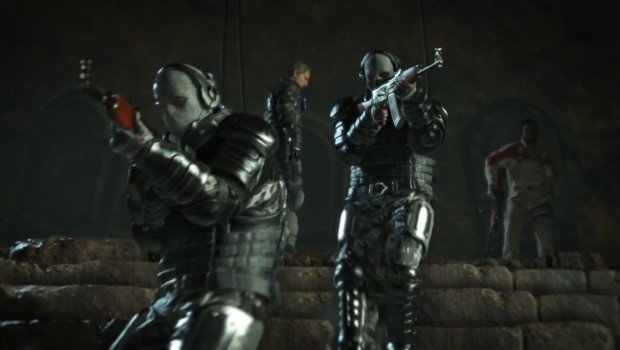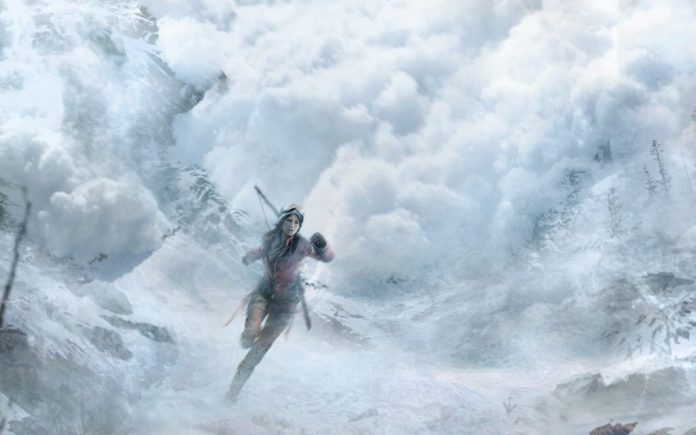*This review is exclusively for the Xbox One version of the game.
Few students at Jesuit had any idea that such a cinematic and well-polished game like the Rise of the Tomb Raider was being released the same day as Fallout 4. In fact, the majority of gamers had no idea that the next game in this series reboot was even coming out. Although, I blame the fact that the game is currently only on Xbox One & 360 as well as Microsoft‘s poor marketing for the title as reasons why few seem to be aware of this outstanding game. 2013 was the year that Lara Craft and the Tomb Raider franchise finally received a decent reboot. The majority of gamers were surprised by Crystal Dynamics’ reboot of the franchise. I, for one, thought that Tomb Raider 2013 was one of the best games of the year obviously behind the DICE Game of the Year award winner, The Last of Us, as well as the enjoyable Grand Theft Auto V. The Tomb Raider reboot replaced the violent, overly-sexualized version of the protagonist with a well-mannered, naive and serious iteration of the character, motion captured and voice by the lovely Camilla Luddington. The game acted as the origin story that transformed the naive archeologist, shipwrecked on an island full of danger, into a female protagonist that was a survival specialist and fully capable of holding her own in a gun or even fist fight. Rise of the Tomb Raider furthered the character’s development and proved to flesh out more of her background and beliefs.

Spoilers for the story from here to the last paragraph.
Rise of the Tomb Raider has Lara Craft in a race against a sinister organization called Trinity in an attempt to reach the lost city of Kitezh. Her journey takes the player from Syria to Siberia, which is honestly a great juxtaposition between two incredibly different environments. All in an attempt to find the secret to immortality, an idea the science community dismissed her father. Now Lara, after the events of the first game, is attempting to continue her father’s work. The overall experience in Rise of the Tomb Raider is a cinematic masterpiece that draws elements from other successful games in this genre such as the Uncharted franchise. The journey that takes place in this title is not only a literal physical journey but also a journey into the very psyche and beliefs of the heroine protagonist.

Gameplay is a mixture between run and gun mechanics and simple to complex puzzles. Honestly, the gun-play on the Xbox One Elite Controller felt a little janky and the sway for the weapons even in the late game was ridiculous. I also disliked the fact that Lara apparently forgot all of her skills from the previous game such as fire arrows and her various bow skills. The weapons, for the most part, excluding the shotgun and the revolver, also felt incredibly ineffective at dispatching attackers. The bow was actually the most useful tool later in the game. It has the ability to fling fire arrows, poison arrows and explosive arrows at enemies. Yet, these skills are relearned later in the game even though she already possessed them in the first game. This brings me to address the new crafting system that is in the game. Lara now can pick up even more materials throughout the game in order to craft Molotov cocktails, IEDs [Improvised Explosive Devides], and poison traps along with several other means of killing attackers. You can also use materials to make better gear and ammunition pouches which are necessary on the more difficult challenges.

The enemies in the game range from wolves and lynxes to heavily armed mercenaries and even ancient “deathless” warriors that, surprisingly, can actually die. The way the player approaches all of these enemy types is supposed to force the player to change their playstyle, but I found myself just spamming IEDS and explosive arrows. This strategy worked on even the more difficult settings. The ability to craft bandages on the go also adds a safety net to the player’s health. If you are ever in a tight situation simply bandage up and continue killing. I just didn’t find the game to be that challenging besides two puzzles, one of which I spent way too much time on. My best advice for the puzzles without giving them away is simply: do not over think it. The puzzles may seem grand and complex, but in reality, all of the things necessary in order to solve them are presented to the player in a simple fashion. Any competent player will by no means have to watch a walk-through or how-to-video on any of the puzzles.

Lastly, I felt that the writing in Rise of the Tomb Raider was far better and less convoluted than the previous game. The 2013 reboot depended too much on supernatural elements and rituals. This one also has an antagonist, the Commander, that you can actually relate to, who must either complete his task or die while saving his sister. The game also uses tropes and themes from religion, but it doesn’t use them as a crutch for its own story and pacing. Although the story does have its fair share of poor pacing segments, the writing outshines the blemishes. Several significant plot twists and a betrayal conform with the rest of the plot and do not feel thrown in there for pure shock value.

Ultimately, Rise of the Tomb Raider is a brief but well-written action-packed experience. I enjoyed the more realistic and linear plot over the previous games’ themes. Whenever you are done with Fallout 4 and you have a Xbox One, I highly suggest picking this game up. Please do not get it on the Xbox 360. It simply can’t compare to the better looking and faster-running version on the Xbox One.
Verdict: 7.8/10






